CES home security systems don’t just record crime when it happens, they help to prevent it. With outdoor security cameras that detect lurkers and scare them away, a doorbell camera that detects and protects packages, and smart locks, lighting, and security sensors—your home is always protected.
Our systems have remote management capability so you can check on your home or business alarm system. Arm and disarm your security system from your smartphone, tablet or computer. Integrate your business security system into a unified solution that is scaled precisely to your needs, with a DMP (Digital Monitoring Products) security system.
CES Systems is a DMP authorized dealer who works to provide the highest quality of security system installation for your residence or business. We personally tailor your DMP security solution to your unique situation, by creating a system that works optimally with your home or business. DMP’s integrated security solutions feature flexible configuration, so you can customize your system to work for you. We supply a wide range of DMP products, including all-in-one touchscreen keypad systems, security cameras, video doorbells, intrusion detectors, Z-Wave devices, door access systems, and a range of customizable modules. CES Systems technicians know how to install your system in a way that provides the best of all the benefits that DMP has to offer.
With the DMP Virtual Keypad app, users can access a wide range of security functions, including arming/disarming, checking status, area arming and output control, as well as remotely controlling lights, thermostats, door locks, appliances, cameras, and more.
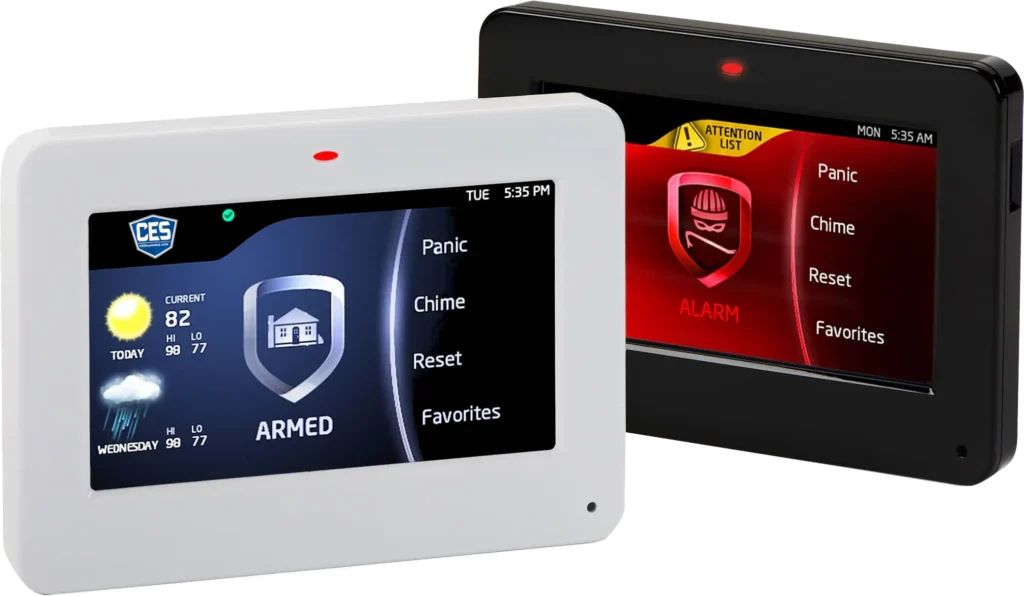
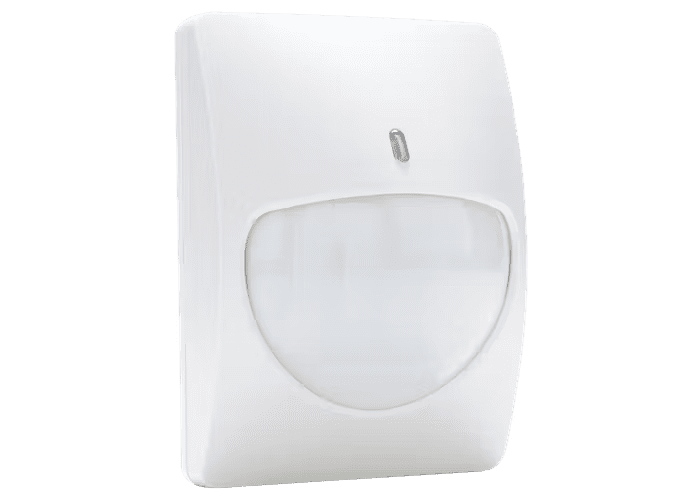
A motion sensor, or motion detector, is an electronic device that uses a sensor to detect nearby people or objects. Motion sensors are an important component of any security system. When a sensor detects motion, it will send an alert to your security system, and with newer systems, right to your mobile phone.
A glass break sensor detects the vibrations that happen as glass breaks, the sound of it breaking or both of these triggers. Once the sensor is triggered, it sounds an alarm or sends a notification to your phone or the police. These alarms typically go into three categories: acoustic, shock or dual sensors.
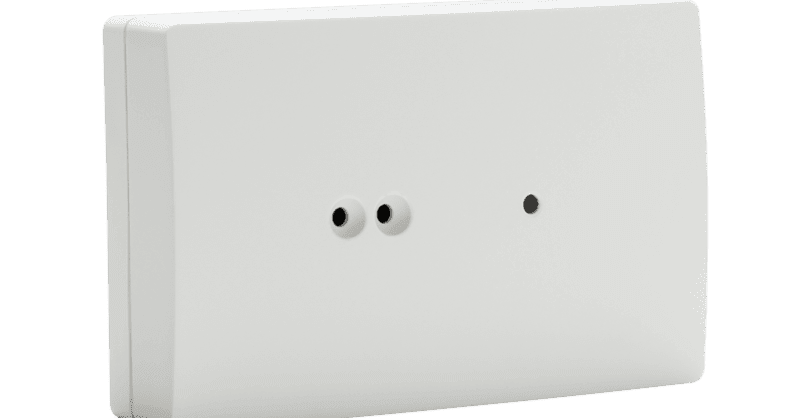
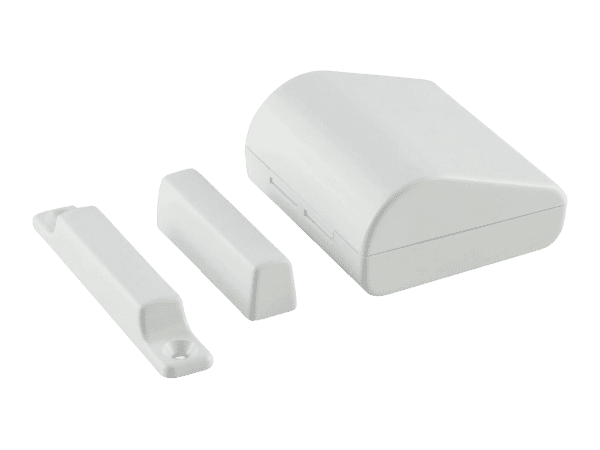
A Door Contact is a type of contact sensor that uses a reed switch and magnet. When the door is closed, the magnet keeps the reed switch circuit closed. When the door opens and the magnet is removed, the reed switch circuit opens, triggering an alert or alarm.
These combination alarms quickly alert you to both the presence of smoke hazards and dangerous levels of carbon monoxide (CO), a poisonous gas that can be found in homes. When smoke alarms detect fires and carbon monoxide particles above a certain level, they signal the alarm sound, can alert your security system, notify 911 and mobile device so that you and your family can get to safety.
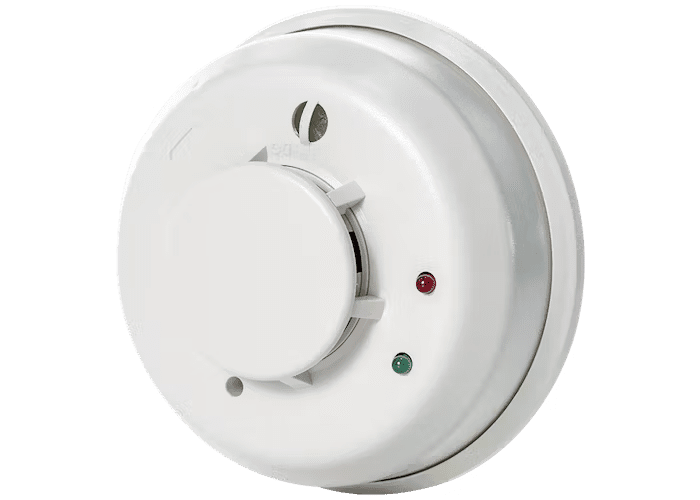
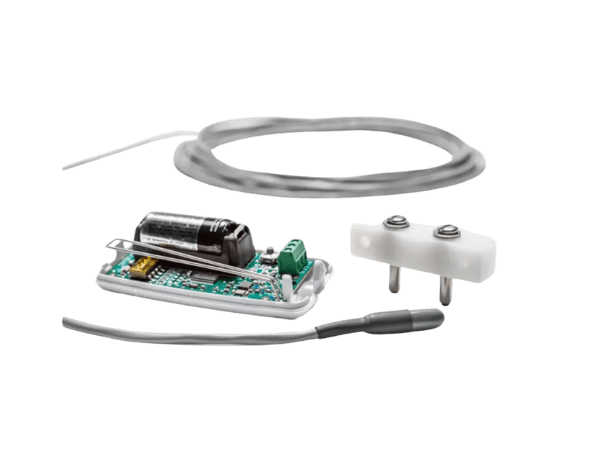
Water sensors detect the presence of water and when placed in locations where water should not be present, detect a leak. These are generally used in Utility areas where water heaters, mains, and lines run, though can be placed anywhere needed. When Wi-Fi is enabled, the sensor can send out a notification to the homeowner through a smartphone app.
Z-Wave is a wireless communication protocol used primarily in smart home networks, allowing smart devices to connect and exchange control commands and data with each other. Z-wave operates on a different frequency than Wi-Fi does, so you can add as many devices to this network as you like and it will not have an impact on your home Wi-Fi network. Z-wave is a low-power technology, so in low-voltage applications, its batteries will last a lot longer.
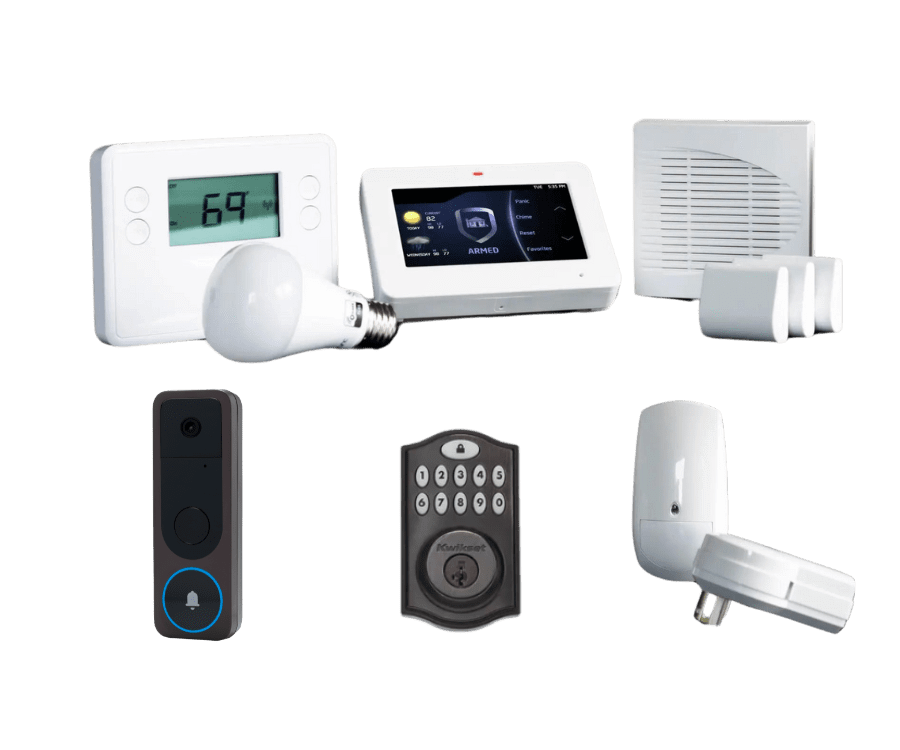
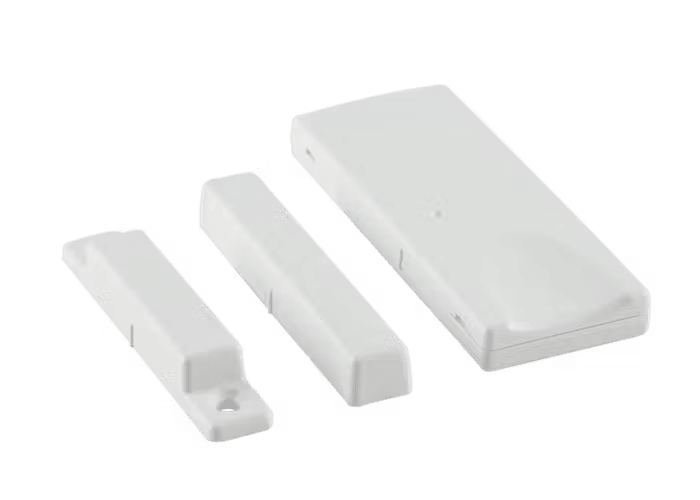
Window contact sensors are made up of two major parts; a smaller piece, which is the magnet, and a larger piece, which is the alarm transmitter. The sensor is placed on the window frame, and the magnet is placed on the moving part of the window. When the window opens, it separates the magnetic contact between the two sections, which trips an electrical circuit called a reed switch. This sends a signal to your alarm keypad or home security app that someone has opened the window.
Video Doorbells act like a traditional doorbell with a button and door bell, though they also have a built-in camera that allows you to see a live video feed of what’s happening at your front door at any given moment, or review archived video of who has visited your home. The doorbell’s sensors can also alert you when motion is detected at your front door, and with the mobile app, you can adjust Motion Zones and sensitivity to your liking.
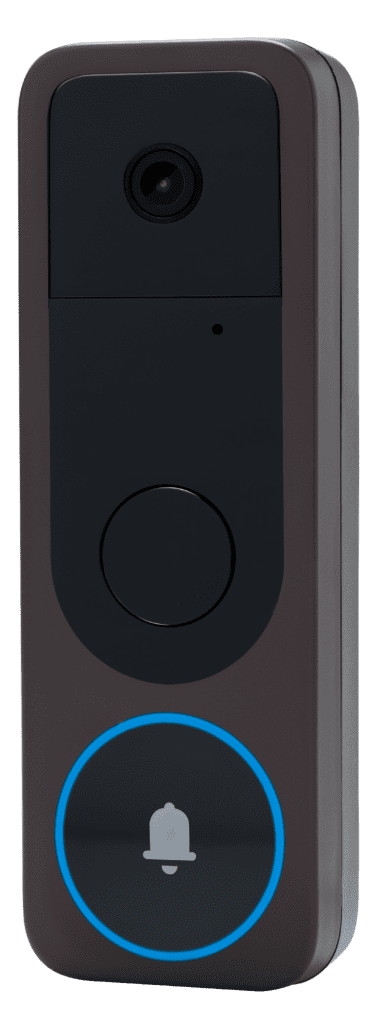
You don’t have to worry about a thing. Our smart home pros install your security system, activate it, and show you how to use it. And with 24/7 monitoring and support, help is always just a few seconds away.